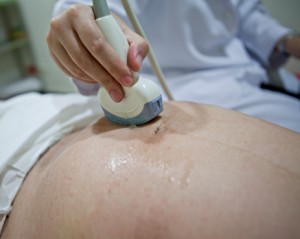Glyburide Tied to Higher Gestational Diabetes Birth Injury Risk Than Insulin
 A recently published study on the birth injury risk connected to gestational diabetes has singled out a mother’s use of glyburide (DiaBeta) versus insulin as being linked to complications in newborns.
A recently published study on the birth injury risk connected to gestational diabetes has singled out a mother’s use of glyburide (DiaBeta) versus insulin as being linked to complications in newborns.
A higher risk of respiratory distress, hypoglycemia, and other birth injuries and anomalies was reported in the study of 9,000 women, which was published March 30 in JAMA Pediatrics. The data show that compared with infants whose mothers were treated with insulin, those whose mothers received glyburide were 41% more likely to be admitted to the NICU, 40% more likely to have hypoglycemia, and 63% more likely to have respiratory distress.
More mothers taking insulin than taking glyburide had a cesarean delivery (52.5% vs 50.6%). The data was reported by first author Wendy Camelo Castillo, PhD, from the University of Maryland, Baltimore and Michelle Jonnson Funk, lead researcher on the study and assistant professor of epidemiology at University of North Carolina at Chapel Hill.
Ms. Funk is frank in her assessment of the dangers of glyburide. “Doctors and patients need to be aware that although glyburide is easier to use than insulin, not all women may be good candidates for management with this medicine. We need to better understand which women can be treated effectively with glyburide, considering not only the short-term but also the long-term effects that these treatments may have on the health of their newborns.”
Gestational diabetes affects 18% of all pregnant women
Gestational diabetes mellitus or GDM is a condition marked by high levels of blood sugar because the body stops manufacturing enough insulin to control those levels. The onset of GDM generally develops during the 24th through the 28th week of pregnancy.
Although it isn’t clear what causes gestational diabetes, it is generally accepted that the woman’s production of certain hormones during pregnancy may play a significant role in its onset. Hormones such as placental lactogen and estrogen are produced in the placenta to help provide sustenance during the pregnancy. However, as those hormone levels increase, they can curtail the regulatory function of the insulin hormone which controls blood sugar levels and regulates the movement of sugar from the blood into the body cells to provide energy.
Macrosomia is a significant gestational diabetes birth injury risk
Without enough insulin, the high blood sugar levels create higher risks of growth abnormalities. One significant complication is macrosomia, which describes an overly large infant for its gestational age, occurring most often in unmanaged (uncontrolled) GDM. Because of the infant’s size, macrosomia increases the risk of dangerous instrument deliveries (e.g. forceps, ventouse and cesarean section) or complications during vaginal delivery (shoulder dystocia). Macrosomia has been shown to occur in 20% of women with GDM compared to 12% of normal women.
Number of women with gestational diabetes has doubled in last 20 years
What is particularly concerning to the researchers is that not only has the incidence of gestational diabetes doubled in women over the last 20 years, the use of glyburide has also taken a quantum leap. Glyburide has become the medication of choice for mothers with gestational diabetes because of its ease of use compared to insulin.
“Insulin may not be a reasonable treatment approach for all women with gestational diabetes mellitus (GDM)]… due to the cost and difficulty storing and administering it,” Drs Camelo Castillo and Jonsson Funk commented.
Ms. Funk observed that a link between the reported complications and glyburide was not clear, and that the study was not intended to look for a cause and effect relationship between glyburide and gestational diabetes complications.
The study results, however, were telling. At this time, insulin is the only drug approved by the US Food and Drug Administration and endorsed by the American Diabetes Association to treat GDM. “Given the widespread use of glyburide, further investigation of these differences in pregnancy outcomes [should be] a public-health priority,” the study authors stress.
Richard IG Holt, PhD, FRCP, from the University of Southampton, United Kingdom, agrees: “This latest study heightens residual concerns about the use of glyburide to treat GDM that need to be resolved before this drug should be recommended for continued use during pregnancy.”
- Medscape, Glyburide Tied to Greater Neonatal Risk Than Insulin in GDM, http://www.medscape.com/viewarticle/842412
- American Diabetes Association, Glyburide for the Treatment of Gestational Diabetes: A critical appraisal, http://care.diabetesjournals.org/content/30/Supplement_2/S209.full


 Resources
Resources
 Resources
Resources
